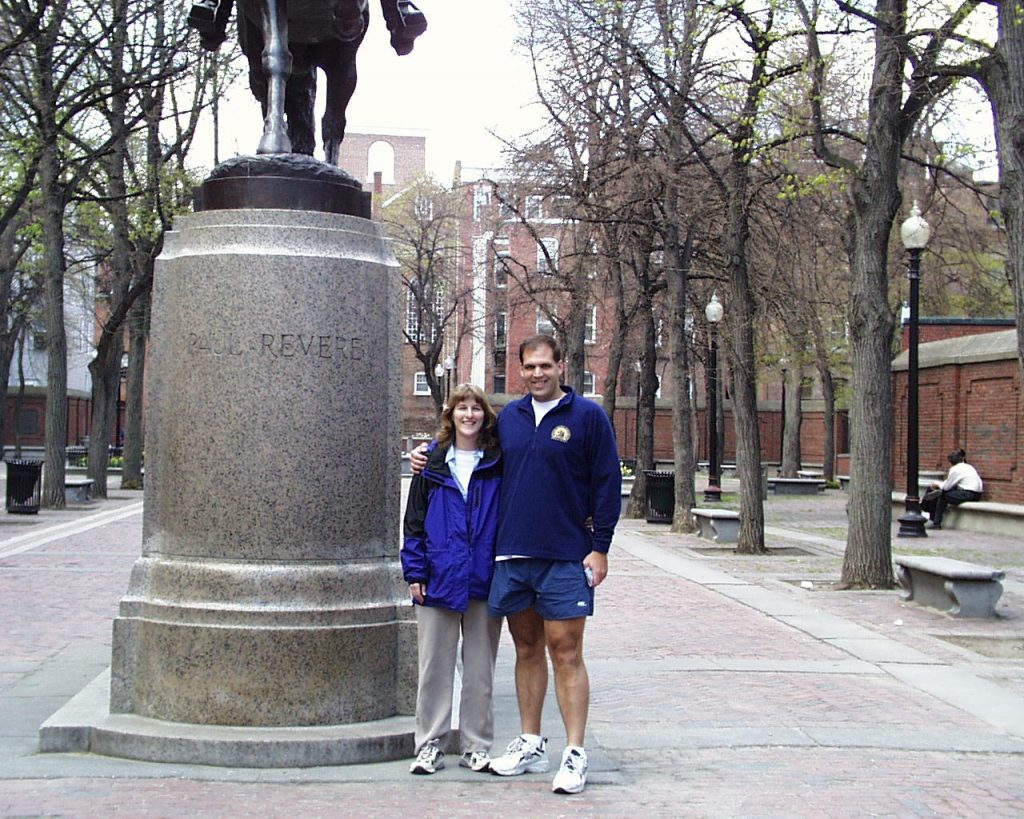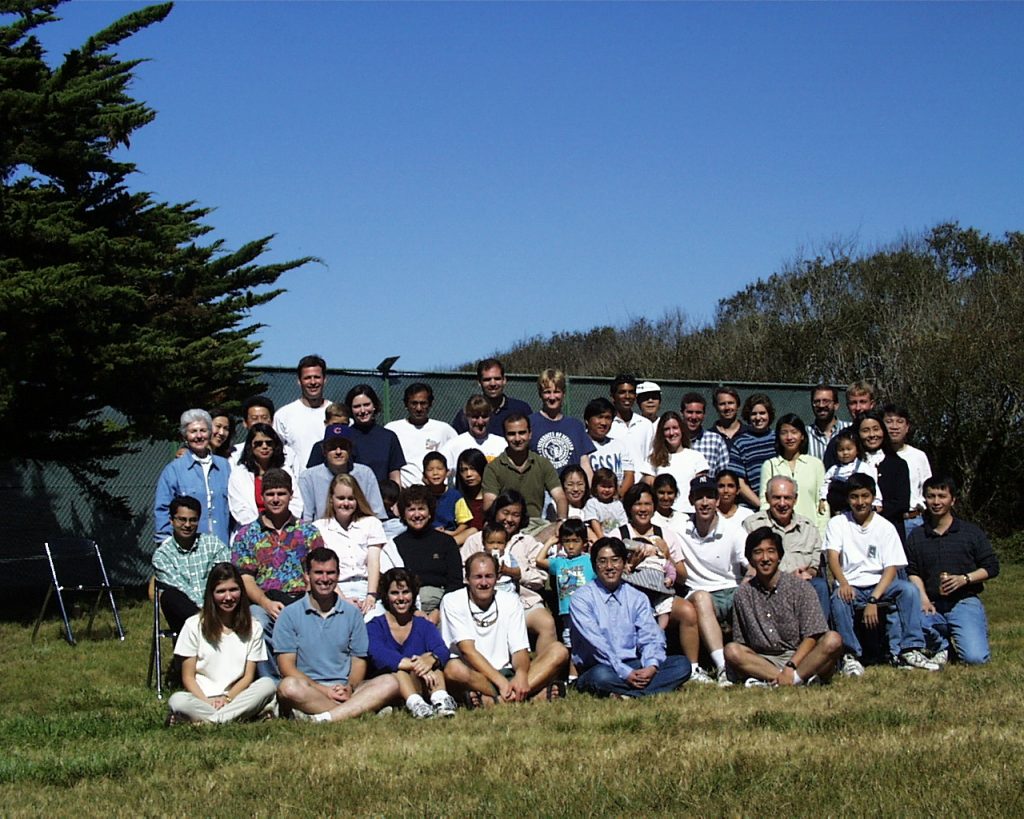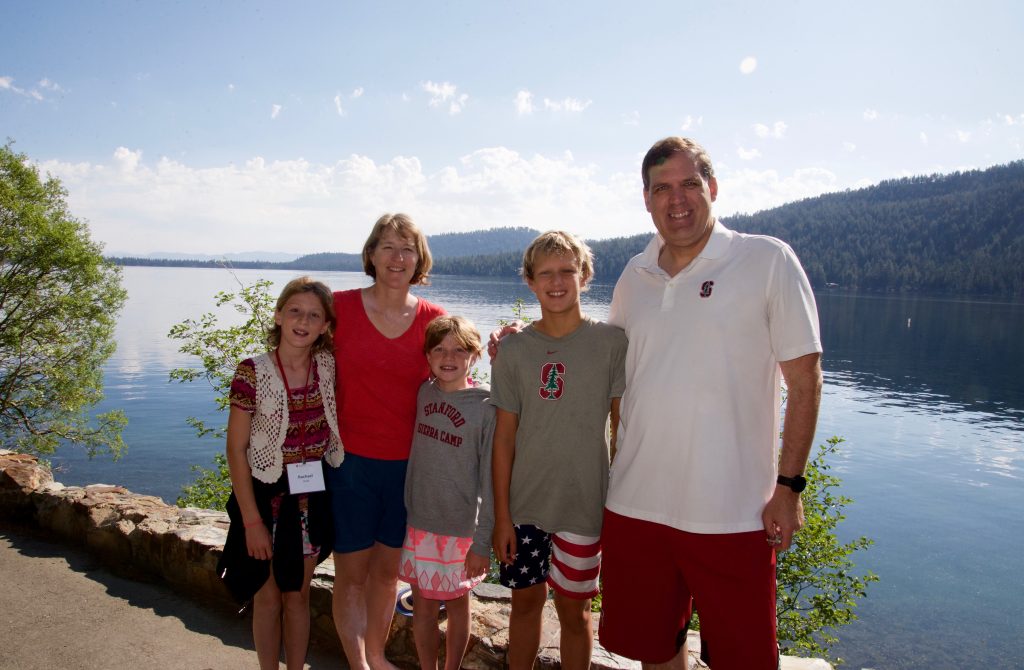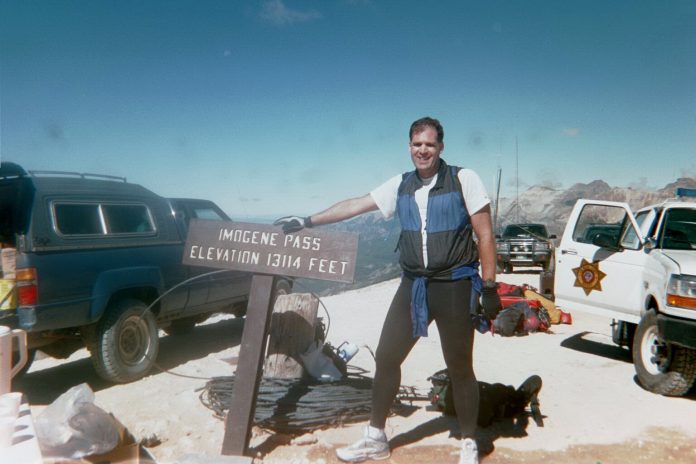A printed version of this interview will appear in the second volume of the Magnetic Resonance in Medicine Highlights magazine, distributed at the annual meeting in Hawaii.
Garry Gold is an electrical engineer, a musculoskeletal radiologist, and a professor at the Stanford University School of Medicine. He is also this year’s ISMRM president. With so many diverse experiences under his belt, Garry has a unique perspective of the field of MRI, and a broad vision for the future of the society. He shared with us some of his favorite ISMRM moments, as well as his plans to extend the reach of the society.
Nikola: You’ve been involved with the society for a very long time. When was your first ISMRM meeting?
Garry: So my first SMRM meeting (at the time it was called Society for Magnetic Resonance in Medicine) was in 1994 in San Francisco. The year before that in 1993 was the ISMR meeting in Dallas, and 1995 (Nice) was the first year of the merged society that became ISMRM.
Nikola: And how many of these meetings have you been to since?
Garry: Every single one, I have not missed a meeting yet.

Nikola: Can you tell us a bit about your early days at ISMRM?
Garry: When I first started in MRI it was in the late 1980s, and I was a Master’s student at Stanford in Electrical Engineering. I started working with John Pauly, looking at ultrashort echo time imaging with half-pulses and projection reconstruction. We initially were applying this to imaging the lung, but as I went along, after I completed my master’s degree and went to medical school at Stanford, I became interested in the problem of imaging atherosclerotic plaque, using what later became known as UTE imaging. I worked with John [Pauly], and Al Macovski and Bob Herfkens to apply some of the UTE spectroscopic imaging we were doing at the time to atherosclerotic plaque in cadaver specimens and correlating that with pathology. That was the basis of my initial work with that technique, that we presented in Dallas and published in JMRI. A little later on, starting my residency in radiology I became interested in musculoskeletal imaging. That was in 1994. My first poster at the SMRM meeting in San Francisco was on multislice UTE spectroscopic imaging and it was initially applied to tendons and knee menisci. For the Nice meeting in 1995 I submitted an abstract and a paper, which was necessary for the Young Investigator Award.
Nikola: How has the society evolved since then?
Garry: There is terrific growth in the breadth of the meeting and the type of technology that is available. I would say at that time we mostly focused on hydrogen proton imaging or spectroscopy. Even though there were probably groups working in multi-nuclear or multiple contrast mechanisms, this was before fMRI, and before diffusion was a common contrast mechanism. I would say one the explosive growths I have seen is along the axis of exploiting the flexibility of MRI in terms of multiple contrast mechanisms to explore tissue.
Nikola: So that brings us to the present day, and you as ISMRM president. How has the recently announced (and contested) immigration ban affected the society?
Garry: It is very sad and disheartening that the recent immigration action has had a negative effect on our meeting. I have had multiple conversations with young scientists whose work has been impacted by the proposed travel ban. Without getting into the politics of the ban, I can only say that I support all scientists and students worldwide in their research, and their efforts to publish and present their work at our meeting. The ISMRM is committed to be the home for the best worldwide science of MR in medicine, regardless of where the researcher is from. We are a global society. We are working with the researchers who are affected by this proposed policy to ensure they have an opportunity to participate in the annual meeting.

Nikola: What is your vision for the society and how do you see it evolving over the next couple of years?
Garry: I will give a two-part answer to that question. One is I strongly believe in the MR value initiative that Jim Pipe has started, and I committed to work with him and Dan [Sodickson] in continuing the initiative. If you think about where we are as a society, MRI is viewed as a very expensive technology. At this point in time it is rarely used as the first line of imaging test in medical care. It is usually used as the second or third test. Despite the power of the technology, because of the cost and the way it is utilized we are in danger of payers and governments saying ‘well that would be great, but it is just too expensive’. We need to be able to counter that argument. We need to be able to demonstrate that even if it is expensive it is worth it, because it saves money from going to surgery, which would be even more expensive. Or it prevents somebody from taking the wrong medication. We’ve done a great job of improving the technology, but we have not done a great job of proving the value. Along those lines there’s a lot that we can do to lower the cost, to make MRI a faster, more accessible, and more targeted exam that could be used as the first choice in the clinic.
Nikola: What are the competing modalities?
Garry: X-ray and CT or ultrasound, typically. Let me give you an example. Imagine you went rollerblading and fell down, and hurt your wrist. You would go to the ER and they would take an X-ray. If the X-ray showed a fracture you are done. But most of the time it does not show a fracture, but you still have wrist pain. And we are not sure based on the X-ray whether there is really a fracture or not. You get put in a splint, you get sent away, you come back two weeks later and you get another X-ray. Maybe they can see a fracture at that point, maybe not. In the meantime you’ve been wearing this splint or cast for two weeks. After two weeks, if the X-ray is negative, and if you are still in pain, you get an MRI. But if instead of an X-ray on your first visit you could have done an MRI scan, one sequence, one T2-weighted fat-suppressed sequence, could have told us if there was a fracture there or not. We know that power exists, but it is not being used right now because the perception is that the MRI exam is too expensive, too hard to access and takes too long.

Nikola: This is a great initiative moving forward and I assume you would like people to get involved on many levels. How do you see young people contributing, either to the value initiative, or just to the society in general? Do you have any particular activities that get junior researchers and clinicians involved in the society?
Garry: Most of our student members are researchers at a stage where they are either trying to get their MD or their PhD, and I think that they can contribute to the value initiative in many ways. There’s a need for more rapid scanning protocols and reconstruction methods that allow us to move quickly in the clinic, to quickly get to a diagnosis, or exclude a diagnosis. Techniques such as parallel imaging and simultaneous multi-slice, compressed sensing, have the potential to take MRI from an hour-long or 45-minute long exam to a 2-minute exam. That immediately makes it much more accessible for patient care. So on the technological front there is a tremendous amount that can be done. On the reconstruction and processing side there is a need to be able to rapidly reconstruct the data and present it in a way that a physician, even a primary care physician, can easily understand. Christiane Kuhl at last year’s annual meeting showed projection imaging of the breast that was acquired in three minutes, and the image could be interpreted in three seconds by a radiologist. This was a perfect example of what we are talking about on the technical side. On the clinical side, for a clinician junior member, there is tremendous opportunity to do research around where is the value, where does MRI fit in the care of the patient, where are the places where MR can have a big impact, and what are the barriers to it being used in that setting now. Why isn’t it that if you hurt your wrist, you don’t just get a five-minute MRI scan instead of X-ray, cast, X-ray, wait, pain, maybe MRI six weeks later.
Nikola: So these would be contributions on the research side. What if junior people want to get involved on the strategic side, administration, logistics?
Garry: Absolutely. One of the reasons that the Junior Fellow program was started was to identify future leaders in the field of MR. And the idea behind the junior fellowship is that it is not only an honor, but an opportunity to identify folks who are engaged in MRI, and who can be tapped to help the society. We are trying and we are continuing to come up with new ways to ask for their help. In the society they participate as observers on committees, there is the Trainee Working Advisory Group, and we use their feedback to listen to the membership. One of the things we had heard through that group was that ISMRM can be a bit overwhelming and a bit big on your first visit, so that was the impetus for creating the newbie reception. That’s been the past. Going forward, where I think we need to engage the talent of the junior members is really in the explosion of web and social media, interaction, education, and outreach. I joined Facebook because it was the only way to see one of my student’s baby pictures. I rarely ever log in. I have never used Twitter. I used Slack for the first time this year. Most of us in the leadership are just not in the same cohort as our students. People are communicating and interacting in entirely different ways and I think we need to engage our students and our trainees and our trainees and our junior fellows to make sure that what we do as a society is out there in the right way. By out there I mean online, on social media, on twitter, on slack, on instagram, so that new potential students/members and the lay people know who we are.
There is one more initiative that I think would be worth featuring. My major initiative as president is called ‘Engaging Asia’. We are an international global society, but there are areas of the world where we haven’t been. We’ve never held a workshop in China, in South Korea, or India.
Nikola: Except for the outreach programs.
Garry: The outreach programs have been very successful, but outreach is different. Flying five faculty members to speak in a session of an existing meeting is different than trying to logistically plan and execute a workshop, or even a future annual meeting. We all recognize the explosive growth of MRI in Asia, particularly East Asia. We need to be in this part of the world to engage the members here. We need to engage the local communities and show what we can offer in terms of training and experience in using this technology. I feel very strongly we need to move in this direction. With the support of the Board of Trustees we’ve set aside funds for supporting a series of workshops in East Asia, meaning full ISMRM workshops with a mixture of international speakers, local speakers, and students from all over the world. We might have a workshop on PET/MRI in China. We are also discussing the idea of holding a workshop on liver disease, which is a huge problem in Southeast Asia, including hepatitis and liver cancer. We’ve engaged the workshop and study group committees, we’ve formed an ad hoc committee with advisors from the relevant countries, and my goal in the next two years is to hold at least four workshops in East Asia. The overarching goal is to show that we are a global society, and for that we need to be comfortable and accessible and ready to engage in any area of the world.





